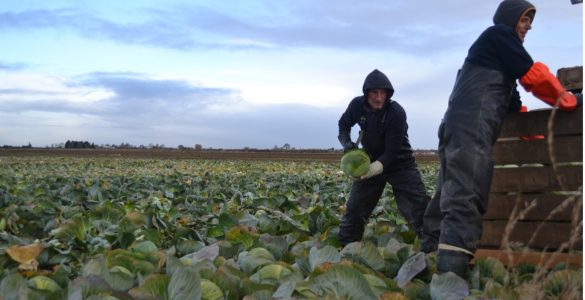Khadijah Elshayyal
Muslim civic activism has a history of posing challenge and discomfort to the British establishment. Back in 1989, at the height of the Rushdie affair, British Muslims were organising politically on a coordinated and highly visible national platform for the first time. Responding to their sustained protests and representations, the then Home Secretary, Douglas Hurd, delivered a speech at Birmingham Central Mosque. He acknowledged the pain that Muslims felt at gratuitous insult to their faith and sensibilities but the predominant emphasis of his speech was to lay down what acceptable and unacceptable forms of political engagement were. In his speech, protests were somewhat begrudgingly conceded to be legitimate, but, he declared, if Muslims really wanted to succeed, their priority was to eschew protest and ‘have a clear understanding of the history and institutions of Britain, of its democratic processes’ (Cited in Weller 2009).
By positioning violence and irrationality as the unacceptable alternative to adherence to the rule of law, Hurd’s overarching message was a call for Muslims to leave their (default) backwardness behind, and to toe the line that had been demarcated for them. Essentially, Hurd’s speech was a statement of ‘this is how we do things here’, an assertion that was echoed emphatically in the mainstream press and policy discourse (see, Thomas 2011). Their message was that public Muslimness is fine, so long as it doesn’t disrupt our (rational) liberal and secular sensibilities.
This is a theme which has endured and sharpened over time. Yet we can note that an irony of the British political class which promotes the impression that it doesn’t ‘do God’, is that actually, it does. We reassure ourselves that ours is not a militant secularism (as in France), and that neither are we overbearing or bombastic about it (as we perceive to be the case in US public life). Yet to think that the secularism of our public and political life is a guarantor of fairness or neutrality, is to ignore the foundational connection that the very notion of secularism has with justifying white supremacy.
Can we understand secularism, or indeed, European notions of ‘religion’, without considering their role in justifying European colonisation as a civilising mission, and how western Christianity was promoted as a superior worldview to the regressive ‘backwardness’ of the east? (Manzoor-Khan 2022)How does this inextricable connection bear out in the ways that civically active Muslims are received and their aspirations and arguments engaged with?
The Trojan Horse Affair (THA) presents us with an instructive and compelling case study affirming the longstanding reality of how the options and possibilities for Muslim civic activism are subject to exceptional preconditions – and that any departure from these constraints carries the threat of punishment in the form debilitating public humiliation and/or sanction.
Let us take for an example a key argument presented by barrister acting for the government in the legal cases against teachers implicated in the affair, namely that they were going “too far in inculcating their own vision of the cultural identity they wish these children to have.” (Trojan Horse Affair podcast, part 6)
This charge is built on an inaccurate and unaddressed assumption that state schools in England and Wales are supposed to be neutral spaces when it comes to religion and culture, and that these teachers were contravening this neutrality by promoting too much (Muslim) religion and culture. The assertion that these were ‘secular’ state schools was repeated throughout the Clarke report, and was most recently reiterated by Nick Timothy, who in the wake of the affair was successively Downing Street’s Chief of Staff and then a columnist at the Telegraph, and asserted that these were ‘secular state schools’.
But there is a glaring disingenuousness in this portrayal. Aside from the obvious complication that no critically honest observer of any curriculum or educational environment would concede its neutrality, we are left again with the question of what this highly prized value of secularism actually looks like. Since we are not like France or the US, there are no hard-and-fast rules about ‘secularism’ in non-denominational state-funded schools, schools like those in Birmingham’s Alum Rock, that were caught up in the THA. There is, however guidance about the nature of mandatory collective worship at such schools. This provision for regular worship stipulates that it should be ‘wholly or mainly Christian in nature’, unless individual schools are granted the ‘determination’ to depart from this arrangement.
Unsurprisingly, considering the overwhelmingly Muslim local populations that they serve, the schools implicated in the THA had sought and received such a determination. Park View had a ‘determination’ in place since 1997 and Islamic assemblies had long been an established element, receiving high praise in inspection reports of 2007 and 2012 (see Holmwood and O’Toole, 2018), Deemed by recent Ofsted inspections to be highly successful, Park View and other schools’ converted to academy status that afforded them a greater degree of autonomy in curriculum and governance. School leaderships understood that their approach of validating and celebrating their pupils’ faith and culture was a legally uncontroversial way of building a safe, nurturing and motivational environment. On this understanding, activists such as Tahir Alam (then chair of governors at Park View) and others describe the decades of community service they had given to their local schools as driven by the hope and determination to lift their children out of a systemically predetermined track towards academic failure – one that they themselves had experienced and felt fortunate to have escaped against all odds.
Yet regardless of this background and context, inspectors and investigators operating under the unforgiving conditions of a hysterical witch-hunt were predisposed to understand the environment within the schools as being subjected to what the Clarke Report called, ‘undue religious influence’ and a ‘sustained and coordinated (ideological) agenda’.
Who could say which was the correct assessment? Who is to say what constitutes religious influence? Is it the provision of communal prayer facilities, accommodations made for fasting in Ramadan? Is it the content of assemblies, sensitivity or awareness shown to cultural or religious norms in class delivery or content? Is it the provision of Arabic and Urdu in the modern foreign languages curriculum? Who is to say what the parameters of ‘due’ and ‘undue’ in any of these areas would be? The answer to these questions is what tests the apparently widespread understanding among press and policy voices of secularism as neutrality.
Further, this question carries even sharper relevance in the Trojan Horse Affair if we consider revelation about the active role played by Humanists UK (HUK) in supporting ‘whistleblowers’ with their testimonies and grievances. HUK by its own account, is emphatically committed to secularism, adopting the same uncritical stance – that separation of religion and state is a guarantor of neutrality – that I mention above. It therefore had a vested interest in the portrayal of ‘Muslim influence’ in schools as harmful and negative. HUK’s commitment to the myth of secularism as some kind of great leveler amidst our messy diversity is oblivious to the structurally embedded exclusion and marginalisation that Muslims and other minoritised groups face. Thus, removing ‘religion’ from the public sphere, leaves us with a public sphere that has historically developed around presumptions of white and Christian normativity, and by extension, their superiority Goldberg 2006)– in short, one which has not intentionally interrogated its colonial past and present. Even the act of defining what constitutes ‘religion’ (and what should therefore be extricated from our public sphere in the process of secularisation) is one which is reserved to the very same state structures and authorities which have historically marginalised and excluded both in empire and in metropole.
We see this lack of self-awareness unfold spectacularly in the account given by Sue Packer, one of the whistleblowers supported by HUK. Built on a self-styled mission to save Muslim women from their oppressive menfolk, Packer herself trips and stumbles as she is confronted with the shoddiness of her own creative licence – admitting that she had not once consulted or even engaged with the Muslim women she was supposedly advocating for:
“I think it’s just because the women aren’t very good at speaking out.
I shouldn’t say the women, sorry.
A lot of women perhaps aren’t confident to speak out in that community, especially female Muslims.
I think there’s just sort of fear about speaking out.” Trojan Horse Affair podcast, part 5
Let’s zoom back out a little and consider David Cameron’s 2015 speech at Ninestiles Academy, also in Birmingham, which set out the imminent implementation of the Prevent Duty and to which a direct line can be drawn from the THA. Cameron’s discourse reiterated the framework and parameters for legitimacy and acceptability of Muslimness in the public space – a framework that had been set out time and again by preceding governments. Dissent and grievance were characterised as ideologically driven extremism – ‘the root cause of the threat we face’, and compliance with the policy direction of the security state tied to notions of loyalty and belonging.
The deployment of a duty to promote fundamental British values in schools as a yardstick with which to measure loyalty to the state (and therefore acceptability in the public space) was consistent with a longstanding state tactic of disciplining nonconforming civic actors who dare to imagine that they can engage and contribute to civic life in ways other than those which have been delineated for them by the political elites. Presented as well meaning, Cameron’s statements in 2015, like Hurd’s in 1989, were laced with patronising undertones and coloured by the power differential between an old Etonian government minister and a socioeconomically marginalised working-class Muslim community.
In the intervening years between 1989 through to the THA in 2014, these conditions for acceptable civic engagement have haunted Muslims time and again. Whether it is thrust upon them via the familiar periodic niqab ‘debate’, moral panics about gender segregation or ‘child hijab’, as innocuously as it might be framed, the demand to separate religion and state is impossible because it requires a sanitisation of one’s Muslimness as a precondition.
Civic engagement and activism are fine if they embody an unquestioning reverence to state institutions and the policy directions that inform them. Activism which isn’t alive to these parameters, or chooses to test them, is deemed a threat, and something to be ostracised. In the context of the THA, we can rephrase this: community engagement in the leadership and management of local schools was encouraged and applauded by the Conservatives’ academies programme, but when such engagement was found to have a Muslim ‘flavour’, it was considered a subversive threat. So we can see that the prejudice and unease around Muslim civic activism which primed the establishment to unquestioningly believe the hoax from which the THA mushroomed, was not exceptional. Rather it is a par for the course feature that Muslims active in the civic space routinely come face to face with.
A notable feature of this unease is how liberal politicians and commentators agonise over the question of what to do about Muslims who wear their faith on their sleeve. Muslim civic activism, in all its diversity, cannot help but resist the neat (if inaccurate) categorisation of the public sphere as neutral and the expectation that faith is left at the door. It might do so actively – by deliberately contesting received norms or the dominant direction of travel in politics and public life. Campaigns against the incursion of securitisation in the public and private lives of Muslims (and society more generally) offer many such examples.
Or it may resist this categorisation inadvertently and in spite of its best efforts. Again, we have countless examples of British Muslim public figures who may themselves make little of their Muslimness, or may downplay its relevance, even as they themselves support policies that demonise and target Muslim individuals, institutions and communities. Nonetheless, their mere presence in the civic space as identifiable with Muslimness otherises them, arouses suspicion and invites prejudice and discrimination.
This is a dilemma which continues to plague Britain and will persist, as long as these colonially rooted notions of ‘secular’ and ‘religion’ frame our discourse and policy. Ultimately, as understated and sensitive as we may believe our secularism to be, it remains a secularism that does not really know what to do with Muslim civic actors.
What can be done about a faith community that doesn’t play by the rules? A community whose religious belief and practice cannot be compartmentalised in ways that reassure and make us comfortable, and whose faith will not be depoliticised, in defiance of our best efforts? The ubiquity of such questions – expressed overtly or otherwise – means that Muslim civic actors are problematised before they even open their mouths – are they moderate or extreme? Are they native or foreign? Are they loyal or disloyal?
The persistence of such anxieties around Muslim civic activism, of a ‘Muslim problem’, if you will, means that any indicators of Muslim organising or networking can be met with a presumption of ulterior motives. The report authored by Peter Clarke on the THA includes a spider diagram, which depicts Tahir Alam as a hyper-connected mastermind. His various extensive connections to professional and community bodies are insinuated to be conspiratorial and sinister and are used to argue that he has had ample opportunity not only to influence at the policy level, but also to bring about change at the local through delivering training and membership of governing bodies.
As the podcast presenters mention – similar diagrams could be drawn around the associations and interests of serving government ministers and ideological think tanks, lobby groups and media outlets – the difference being that the former are disenfranchised, their citizenship conditional, a case needs to be made for their voices to be heard… and when they are, demands are made that their voices be shorn of anything which makes them distinctive, that they moderate the tone and content of their voices so as to be palatable to the sensitivities of an anxious establishment. As for the latter, they form part of a minority who wield disproportionate power – power which is inherited and bequeathed through centuries-old institutions and the wink, nudge and handshake of the old boys’ club.
The Trojan Horse affair will be remembered in our history not only as a moment that exposed how embedded colonial attitudes in our political and press establishments remained, but also one which was used to justify further the idea of Muslim exceptionalism. It was a public inquisition of an alleged Muslim fifth column within our schools and public spaces that needed to be subdued, contained, and made a cautionary example of.
References:
Goldberg, David Theo (2006) ‘Racial Europeanization’, Ethnic and Racial Studies, 29:2, 331-364, DOI: 10.1080/01419870500465611
Holmwood, John and O’Toole, Therese (2018) Countering Extremism in British Schools? The truth about the Birmingham Trojan Horse Affair, Policy Press.
Manzoor-Khan, Suhaiymah (2022) Tangled in Terror: uprooting Islamophobia, Pluto.
Thomas, Elaine, R. ‘Rereading the Rushdie Affair: The Contested Terms of Being British,. Immigration, Islam, and the Politics of Belonging in France: A Comparative Framework, Philadelphia: University of Pennsylvania Press, 2011, pp. 214-244.
Weller, Paul (2009) A Mirror For Our Times: ‘The Rushdie Affair’ and the Future of Multiculturalism, Continuum.
Goldberg, David Theo (2006) ‘Racial Europeanization’, Ethnic and Racial Studies, 29:2, 331-364, DOI: 10.1080/01419870500465611
Khadijah Elshayyal holds research fellowships at Edinburgh and SOAS. A specialist on Muslims in Britain, she is General Secretary of the Muslims in Britain Research Network and author of Muslim Identity Politics: Islam, activism and equality in Britain (IB Tauris, 2019). She tweets @drkelshayyal.
Header Image Credit:
TO CITE THIS ARTICLE:
Elshayyal, Khadijah 2022. ‘‘Secularism’, ‘religion’, and the public disciplining of nonconforming Muslim civic activism’ Discover Society: New Series 2 (2):










